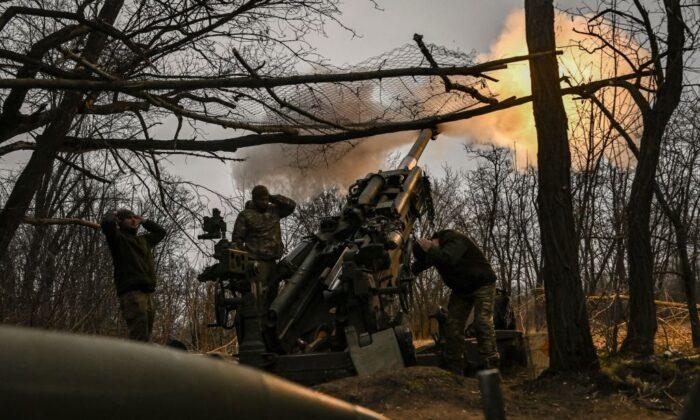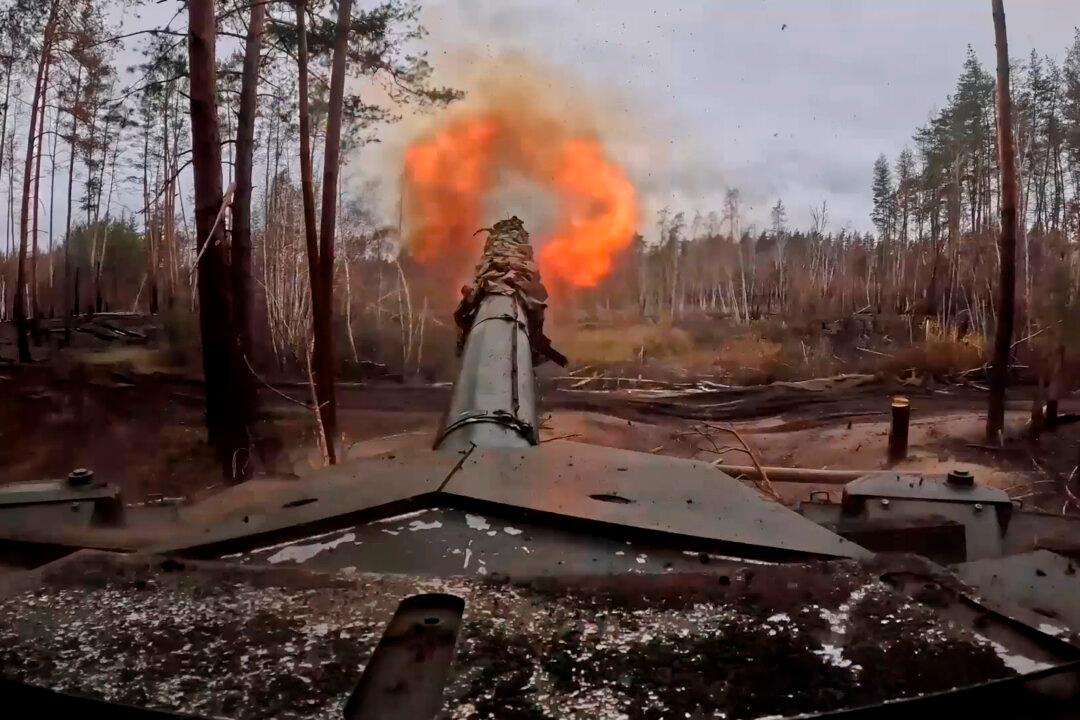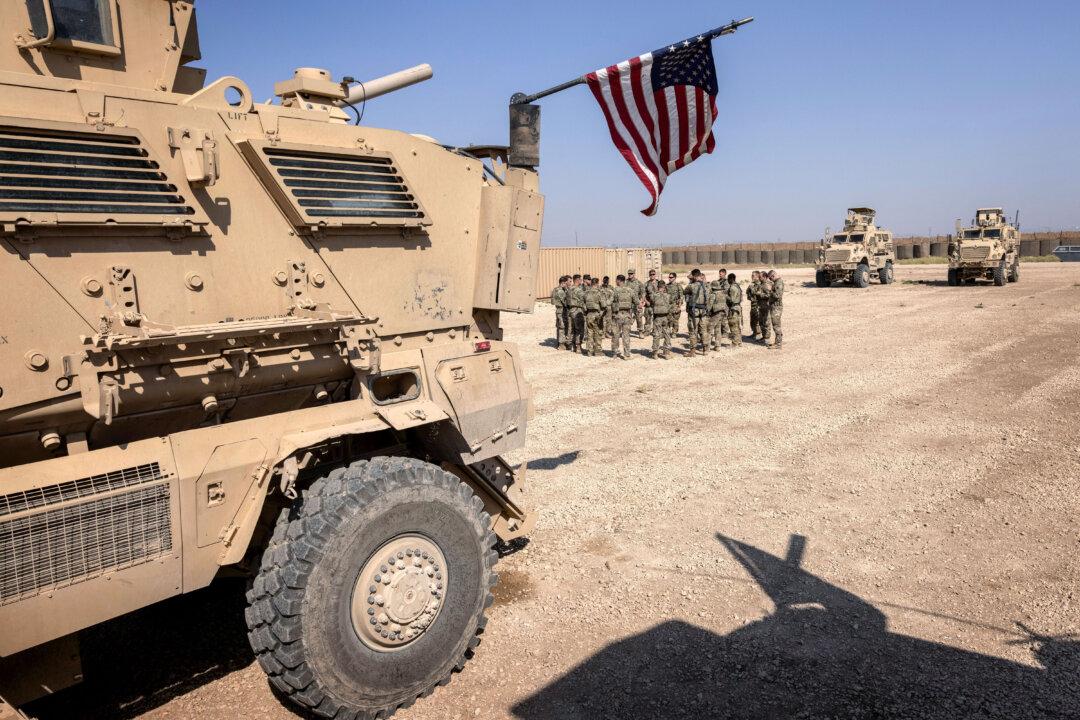Ukrainian military officials have confirmed plans to launch a major counteroffensive to recover the strategic city of Bakhmut, a vital Ukrainian transport hub in the eastern Donetsk region.
The scene of fierce ground fighting for several months, Bakhmut is largely surrounded by Russian forces, although a substantial number of Ukrainian troops remain in the city.
On March 23, Oleksandr Syrskyi, commander of Ukrainian ground forces, said the anticipated offensive to “relieve pressure” on Bakhmut would likely be carried out “very soon.”
Speaking on the Telegram messaging app, Syrskyi asserted that Russian forces deployed in Donetsk had “lost considerable strength” and were “running out of steam.”
His remarks came a day after Ukrainian President Volodymyr Zelenskyy visited the war-torn city, where he decorated Ukrainian troops with medals and thanked them for “protecting the sovereignty of our country.”
According to pro-Russian sources, Bakhmut (Artyomovsk in Russian) is currently in a state of “operational encirclement.”
“This means all the approaches and all the transportation arteries leading to the city are under the control of our artillery,” Yan Gagin, a military adviser to the head of the Moscow-recognized Donetsk People’s Republic, said on March 22.
Gagin claimed that about 10,000 Ukrainian troops remain in Bakhmut, roughly 70 percent of which is under Russian control.

Leopards Sighted
Speaking on Twitter on March 22, the British Ministry of Defence conceded that Ukrainian forces “remain at risk from envelopment from the north and south.”However, it noted that Ukrainian forces had “initiated a local counterattack” to the west of Bakhmut, which, it stated, was likely to “relieve pressure” on threatened supply routes.
Echoing statements by officials in Kyiv, the ministry pointed to a “realistic possibility” that the Russian advance in Bakhmut was “losing momentum” because of the redeployment of units “to other sectors” of the frontline.
Lending credence to reports of an imminent Ukrainian counteroffensive, Gagin said newly supplied Western arms and equipment—including German-built Leopard tanks—had been recently sighted behind Ukrainian lines.
“There have been reports about Leopard tanks and armored personnel carriers appearing on the Artyomovsk [Bakhmut] frontline,” he said in comments cited by Russia’s TASS news agency.
While The Epoch Times was unable to verify the claims, Berlin announced plans in January to provide Ukraine with a number of Leopard tanks. It also gave the green light to other allies of Kyiv to re-export their own German-made Leopards.
Along with Germany, North Atlantic Treaty Organization members the UK, France, the United States, Poland, Norway, and Slovakia have all announced their intention to send tanks to Ukraine, several of which reportedly have already been delivered.
In September 2022, Russia effectively annexed four regions of Ukraine, including Donetsk, after holding controversial referendums.
Kyiv and its allies, which view the move as an illegal land grab, demand Russia’s unconditional withdrawal from all four territories.

Escalations
Other recent developments on the international stage have prompted fears that the conflict, now in its second year, could escalate further.On March 20, British defense officials announced that munitions for Challenger 2 combat tanks—14 of which the UK has pledged to Ukraine—would include armor-piercing shells containing depleted uranium.
Due to their exceptionally high density, munitions containing depleted uranium can penetrate heavily armored targets, including tanks.
But they can also pose serious health risks to humans, animals, and ecosystems located in or around impact areas.
Russian President Vladimir Putin, for his part, said Moscow would “respond accordingly” if Western-supplied depleted uranium rounds were used on the battlefield in Ukraine. He didn’t elaborate.
On March 23, the Russian Foreign Ministry warned that the potential effects of depleted uranium munitions “will be impossible to control for neighboring states or states of the region.”
Recent days have witnessed several other notable escalations.
On March 14, Russian warplanes downed an advanced U.S. aerial drone flying over the Black Sea near the Russian-controlled Crimean Peninsula.
In response, Sen. Lindsey Graham (R-S.C.), called for shooting down Russian military aircraft in international airspace.
On March 20, Russian warplanes were hastily scrambled after two U.S. strategic bombers were briefly spotted over the Baltic Sea. According to the U.S. Air Force, the flights were part of a “normally scheduled training operation.”
The next day, two Russian strategic bombers—escorted by fighter planes—flew over the Sea of Japan for several hours.
The Russian Defense Ministry described the move, which coincided with a visit to Kyiv by Japan’s prime minister, as a “planned flight” over neutral waters.





